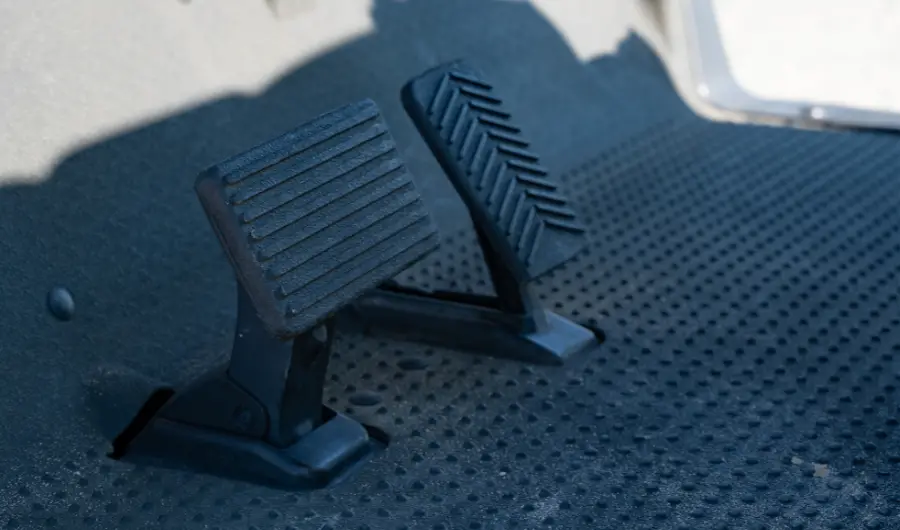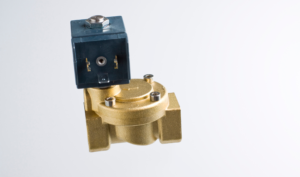Once, it happened with my coaching client on Friday evening. I had scheduled our golfing session, but when reaching his gas golf cart, the engine was silent. Now for me, it wasn’t much shocking; we quickly figured out that the problem is with the corroded wire of the switch and quickly fixed it. But it could damper your plans, and I know you have to figure out the problem in this situation quickly.
Troubleshooting Gas golf cart problems can range from minor difficulties to major troubles. Maybe your cart is not starting, or it’s making mysterious noises, or you can be facing sudden power loss. Whatever the problem might be, it can quickly bring down your enthusiasm for the game. As a fellow gas golf cart owner who has faced similar challenges, I understand the inconvenience that can arise from such situations.
However, there is a simple and effective way to address these pain points. It doesn’t always require extensive expertise or expensive tools, but you can easily carry it out by following proper guidelines.

In this guide, I am going to help you troubleshoot the most common issues that can occur in gas golf carts and provide you with the knowledge to cope with them effectively.
Essential Precautions to Take Before Getting Started
Precautions can minimize the hazards that may occur during the process. You can save time, money, and energy by staying proactive while dealing with your gas golf cart.
No rock breaking rules, but just basic precautions that I personally follow every time are listed underneath.
- Safety First: Prioritize your safety by wearing appropriate protective gear, such as safety goggles and gloves, to avoid injuries while working on the golf cart./li>
- Disconnect the Battery: Before beginning any troubleshooting procedures, ensure the gas golf cart’s battery is disconnected. This prevents accidental electrical shocks and keeps the cart from starting unexpectedly.
- Ventilation: Work in a well-ventilated area, preferably outdoors or in a garage with good airflow. Fuel fumes can be hazardous, so avoid working in enclosed spaces without proper ventilation.
- Fire Safety: Keep fire extinguishing equipment nearby, such as a fire extinguisher, in case of any fuel-related mishaps or potential fires.
- Use Proper Tools: Ensure you have the necessary tools for troubleshooting, including wrenches, multimeters, screwdrivers, and other equipment recommended for your specific golf cart model.
- Click Pictures to reassemble afterwards: When you disassemble parts to make adjustments, take photos to help you remember the correct location of the parts.
Troubleshooting gas golf cart problems
As an expert golfer, troubleshooting gas golf cart problems is essential to ensure a smooth game of golf. But before getting into the troubleshooting part, you must recognize the problem, get to its root cause, and then take action appropriately.
My Take
I would suggest you familiarize yourself with the common issues that may arise during a game. This knowledge will enable you to quickly identify and resolve any problems that may occur.
To face any problem head-on you should have a comprehensive understanding of your golf cart’s components. This knowledge will enable you to solve fuel problems, electrical failures, or mechanical issues within lesser time. Remember to prioritize safety throughout the troubleshooting process, adhering to proper protocols and precautions.
1: Cart not starting

The most common problem faced by most gas golf cart owners is the idle cart. For your ease, I have organized a checklist to get the main issues out of the way every time you face an idle cart.
First off, check your wirings and connections. Ensure they are intact and securely tightened. A loose connection can prevent power from flowing and leave you stranded.
If the wiring seems fine, check your fuel levels. It may sound obvious, but sometimes we overlook the simple stuff. Make sure you’ve got enough fuel to keep you going.
Now, if those two factors check out, check the electrical system. If your cart is not starting on the ignition, making consistent loud noises, it can be due to a clogged fuel filter. Loose belts or bearings tend to make the weird noises you’re hearing.
Possible Fix:
Check the fuel level and ensure the filter is clean and unclogged. Refill or replace as necessary. To fix the noises, tighten or replace loose belts and damaged components. Lubricate bearings if required. Also, don’t forget to check the wiring system throughout your cart.
Cost:
The cost will depend upon where the problem lies. If it is a key switch or a fuse problem, the cost figure will lie somewhere between $50 to $150. However, if your solenoid is bad, the cost can be doubled or more.
2: Fuse Problems

If your cart’s normal functions are getting interrupted or the lights are blinking abruptly, check the fuses. A blown fuse can disrupt the current flow. However, before you rush to replace it, pay attention to the root cause.
Fuses usually blow due to a short circuit or an overloaded circuit. Fixing the underlying issue will prevent future fuse blowouts. Any exposed wires, damaged connections, or accessories that may be drawing excessive power can be the cause.
Fix:
Locate the fuses in your cart and carefully inspect them. If you find any blown fuses, replace them with new ones of the appropriate rating. To address the underlying electrical issue, it’s essential to investigate further. Look for exposed or damaged wiring; if necessary, consult a professional for assistance.
Cost:
Investing in new fuses won’t cost you much. It ranges between $30 to $60 depending upon the brand you’re choosing.
3. Switch Problems

The key switch joins the battery to the connector. If your cart is not picking up or it is moving in one direction only, it can be a switch fault.
A potential cause of key switch malfunctions can lie in the wiring department. If there’s a glitch in the wiring, it can disrupt the connection between the key switch and other vital components.
Sometimes, the key switch itself may be perfectly fine, but there’s a disconnection from the solenoid. The solenoid acts as the gatekeeper, allowing power to flow to the cart’s motor. If there’s a disruption in this connection, it can lead to a faulty key switch experience.
A worn-out forward/reverse switch, located near the key switch, controls the direction of your golf cart. Over time, it can become worn or damaged, resulting in limited movement or an inability to change direction.
Fix:
Begin by setting the key switch in the desired direction, either forward or reverse. Take a close look at the wires connected to the switch, ensuring they are secure and corrosion-free. If you notice any loose or corroded wires, clean or replace them.
Cost:
A new set of key switches may cost you a good $85 to $150. Ordering on short notice might cost more.
4. Brake Failure or Inconsistent Braking
Faulty brakes are one of the most dangerous problems a golf cart can face. Brakes are a crucial safety feature, and any irregularities in their performance can give you anxiety on the course. If you’re experiencing inconsistent braking, addressing the issue promptly is essential.

Over time, the brake pads in your gas golf cart can wear down due to repeated use and friction. Additionally, brake fluid leaks can occur, leading to insufficient pressure and compromised braking performance.
Fix:
Replace worn brake pads and inspect the brake lines for any leaks. Refill or bleed the brake system if necessary.
Cost:
The average cost for a complete brake set (including pads, rotors, and calipers) on a golf cart is between $200 and $400.
5. Bad Solenoid
Solenoid is the gateway of current toward the cart engine. If it is out of order, your cart will act up.

Normally, when you press down on the accelerator, you should hear a distinctive clicking sound coming from the solenoid. This sound indicates that the solenoid is alright. However, if you don’t hear that reassuring click, it’s a sign that there might be some issues with your solenoid.
To check if the solenoid is indeed the problem, you can perform a simple test using a voltmeter. Connect the voltmeter to the solenoid and observe its reading. A healthy solenoid should show a reading between 0 and 0.4 ohms.
If the voltmeter reading falls outside this range, it’s a clear indication that your solenoid is faulty. Overheating is a common cause, especially if the solenoid has been exposed to excessive heat or if it has been working under heavy load for extended periods.
Another factor could be worn-out coils within the solenoid, which can affect its ability to properly regulate the flow of electricity.
Fix:
First, locate the solenoid and wire terminals using the provided diagram or manual. Then, find the connections and undo them using screwdrivers and wrenches. Disconnect the wires from the old solenoid, making sure to note their positions.
Next, gently remove the old solenoid without disturbing other wires or connections too much. Put the new solenoid securely in its place. Finally, reconnect the wires to the new solenoid, ensuring proper placement.
Cost:
While the cost may be slightly higher for a new solenoid, it’s a crucial component for proper cart operation and a worthwhile investment. It can range from $50 to $300, depending on whether you’re getting a single one or a pack.
Yamaha gas golf cart troubleshooting
As we have covered some common troubleshooting scenarios for gas golf carts in general, it’s worth noting that specific cart brands may have their unique characteristics and requirements. If you own one of the popular cart brands such as Yamaha, Club Car, or EZGO, let’s take a moment to discuss some key troubleshooting points specific to these models.

Yamaha gas golf carts are a popular choice among golfers. However, like any other vehicle, they encounter problems from time to time. Let’s discuss the major problems faced by Yamaha gas golf cart owners.
Some users reported that they are having problems with the off switch on the Yamaha gas golf cart as soon as they got it. It resulted in difficulty turning the engine off. If you’re facing a similar problem, inspect the off switch closely for any loose connections or signs of damage. Tighten loose wires and clean corroded parts. If necessary, replace the faulty off switch with a new one to ensure proper functionality.
Fuel delivery issues are also reported in Yamaha gas carts. The reason might be clogged-up fuel filters or carburetor. To deal with it, check the fuel filter for clogs and replace it if necessary. Clean the carburetor. Remove any debris or blockages that may be affecting fuel flow. Ensure that the fuel lines are clear and not damaged.
EZ go gas golf cart troubleshooting
EZGO golf carts are popular gas carts used by various golfers. They are known for their durability and versatility. However, we found some users concerned with their EZGO gas golf carts. Let’s respond to the major concerns.

EZ go carts sometimes stall while running, ruining the flow of your ride. The cause can be a clogged air filter, restricting airflow to the engine, or a dirty fuel filter, causing hindrance in fuel supply, or some other electrical connection issues. If your cart is stalling, check the air filter. If it is dirty or damaged, clean or replace it accordingly. The same goes for the fuel filter. Additionally, check the wiring, connections, and ignition system. Tighten the loose connections and replace damaged wires.
The accelerator pedal allows you to control your cart on the course. If it is stuck or jammed, it can be a safety hazard. The accelerator pedal can become stuck due to debris, or worn-out components within the pedal assembly. To troubleshoot, inspect the accelerator pedal for any visible obstructions. Remove any debris that may be causing the pedal to stick. Apply a lubricant to the pedal’s moving parts, to ensure smooth function. If it still doesn’t work properly, check the pedal assembly for any worn-out components and repair or replace them.
🚩 Related:
- Troubleshooting Bad Controller On The Golf Cart
- What To Look For When Buying A Used Golf Cart
- How To Make Gas Golf Cart Faster
On the whole
To put things in short, troubleshooting can sometimes become frustrating, but I have covered some essential tips to help you get started. I discussed checking fuel levels, cleaning filters, and inspecting spark plugs to maintain your cart’s performance.

However, professional assistance is highly recommended if you encounter complex issues or need accurate diagnoses and fixes. Remember, your golf cart’s safety and longevity depend on proper maintenance and timely repairs. So don’t hesitate to ask for professional help to keep your cart in top shape and ensure an enjoyable golfing experience.
Common Related Questions
What causes a gas golf cart to lose power?
If your gas golf cart is losing power, it can be due to a number of reasons, such as a clogged carburetor, brake system troubles, key switch malfunctions, or issues with the solenoid. To fix these issues, carefully remove all the obstructions, clean the components, and replace damaged electrical parts.
Why is my gas golf cart not working?
There could be several reasons for your gas golf cart not working. Common causes include an empty tank, a faulty spark plug or ignition coil, and loose connections or corroded metallic components.
Is a gas golf cart better than a battery golf cart?
Yes. Gas carts are generally more powerful than the electric ones. They are more durable and possess a longer lifespan. Moreover, they are a bit lighter in your pocket because you will not have to buy a new set of batteries every 5 years. However, gaseous fumes are a big environmental hazard.
How can I make my gas golf cart run better?
If you want to increase the speed of your gas golf cart, remove the speed limiter (governor) from it. For overall better functionality, make sure you carry out proper care and maintenance.
Can you adjust the speed on a gas golf cart?
You can adjust your gas golf cart’s speed by removing the governor, the part that keeps your vehicle below a certain speed limit.
Can a gas golf cart overheat?
Yes, gas golf carts can be overheated by excessive use or too much strain. The motor system can fire up, fraying the electrical components. In such situations, switching off your cart and cooling it down for some time is better.
How do I increase the torque on my gas golf cart?
In order to increase the torque on a gas golf cart, install a cold air intake, or a high-performance clutch. Cold air intakes bring more air into the engine, increasing torque. Meanwhile, the clutch will engage the motor at a higher RPM, producing more torque.
A guy with a charming face following his passion (both Golf and Blog) from Kansas. Bryan is the writer and creator of IAmLearningHowToGolf.com, loves golf, but he didn’t start playing until he was in his 20s. He’s not a pro by any means, but he’s put in the time and effort to get pretty darn good. Bryan’s main goal with this blog is to help other golfers improve their game and have more fun on the course. He does this by writing informative, relatable, and down-to-earth content. When he’s not golfing or writing, Bryan enjoys going on hikes, spending time with his family, and watching movies sometimes. For any queries reach out to him at Bryan@iamlearninghowtogolf.com.

